In a world starved for more protein sources, the meat industry gets its fill from almost anywhere. People across the world eat some strange things, from cockroaches and frogs to dogs and horses. I would never consider eating horse meat!
The idea of horses for human consumption is reprehensible to me. These animals are capable of such intelligent thought and kindness.
So imagine my shock when a fellow rider held a barbeque, only to inform us after the meal that we’d eaten horse! (#Ew!)
But what exactly is horse slaughter, why is there so much money in the horse slaughter industry, and what considerations should we keep in mind regarding the slaughter of horses?
Why Are Horses Slaughtered?
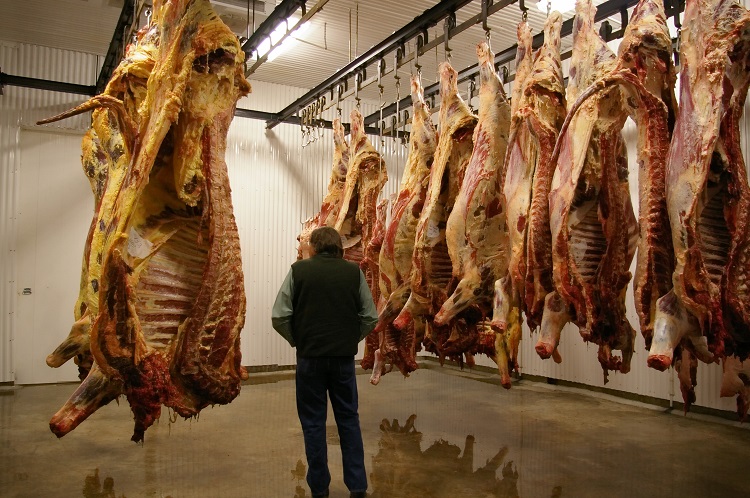
The main reason that horses are used for human consumption is easy: Horse carcasses offer a lot of meat per pound, especially compared to cattle. A horse can pack on more weight in a year compared to a young calf, equating to more bulk meat off the bone.
History of Horse Slaughter
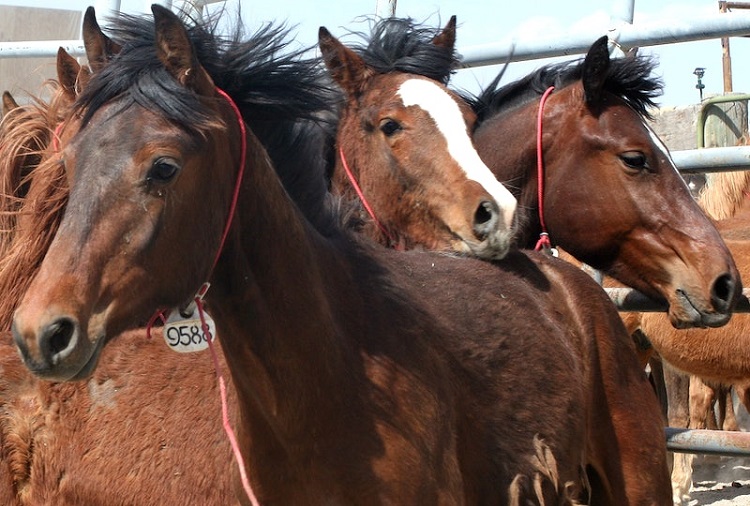
The reality is that human consumption of horse meat predates their use of the horse as riding beasts or companion animals. During hard times (#famine), meat was scarce, so horses were slaughtered for food. However, horse meat is not considered “normal” cuisine in most Western societies.
Some cultures in the East, Europe, and Africa have developed a taste for horse meat, even preferring it over beef, pork, or chicken. But is it normal to slaughter horses for meat in the U.S.?
Most Americans don’t eat horse meat. Horses are considered in the same class as other favored pets like dogs and cats. Yet, horse slaughter facilities have abounded in the U.S. since the 1970s.
In simple terms, horse meat is cheap and plentiful, making it ideal for use in the pet food industry. But don’t be surprised if some unscrupulous butchery owners add a little horse meat to their processed meat without telling their customers (#Shocking).
Further back in U.S. history, the Mustang (the native horses of America) were also rounded up and sent to slaughter as a means of breaking the Indian spirit and to rid the colonists of wild horses that would “plunder” their grazing pastures (which were reserved for cattle).
In more modern times, horse slaughter plants have paid top dollar for horses to be surrendered for slaughter. Desperate horse owners who have an overstock of horses have often opted to have horses slaughtered rather than having them put to sleep.
Horse theft syndicates often provide horses for slaughter, making money by stealing horses and then surrendering them to slaughter plants with false papers.
Fortunately, many horse owners felt like me. Horses aren’t food animals, and petitions began. State legislature resulted in an official ban on horse slaughter plants, which made horse slaughter in the U.S. illegal. From 14 slaughter plants in the early 90s to no horse slaughter plants. It’s been quite the accomplishment—on paper.
Sadly, there is no law against shipping horses abroad, and it’s estimated that well over 100,000 American horses are shipped under false pretenses to international horse slaughter facilities each year. Local auctions often see “kill buyers” scooping up horses at bargain prices, with these horses shipped to foreign countries for slaughter.
A vast majority of the stock sent to slaughter plants are stolen horses, with some horse owners even selling animals raised for slaughter at slaughter auctions abroad.
Methods of Horse Slaughter
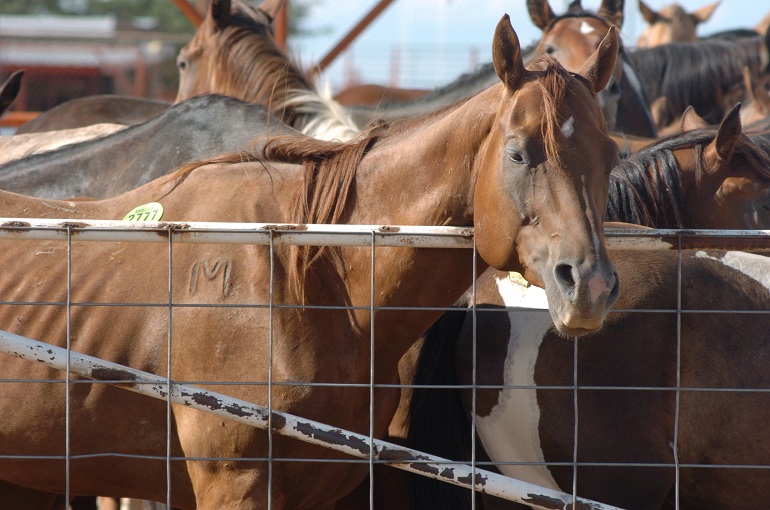
Perhaps one of the most controversial aspects of horse slaughter is the method used. Most slaughter plants aren’t built especially for equine physiology, which means the horse is moved through a chute with the handler at the front with a captive bolt gun that targets the middle of the horse’s forehead.
The blow from the bolt is intended to kill the animal on impact, but while this happens for cattle, it rarely does for horses. Most often, the blow merely stuns the horse, rendering them paralyzed but not unconscious. As a result, the horse can still feel the pain of the slaughter process.
Fortunately, Americans oppose the inhumane treatment of animals, and the Humane Society has declared this form of slaughter as animal abuse since the horse is awake when they meet a brutal and terrifying end.
Some slaughter plants rely on gunshots to kill the horse, but again, this is not a reliable and humane method of killing a horse. If the horse moves even a fraction of an inch when the shot is fired, it can lead to severe injury, maiming, and animal cruelty.
Horse Slaughter Is Not Euthanasia
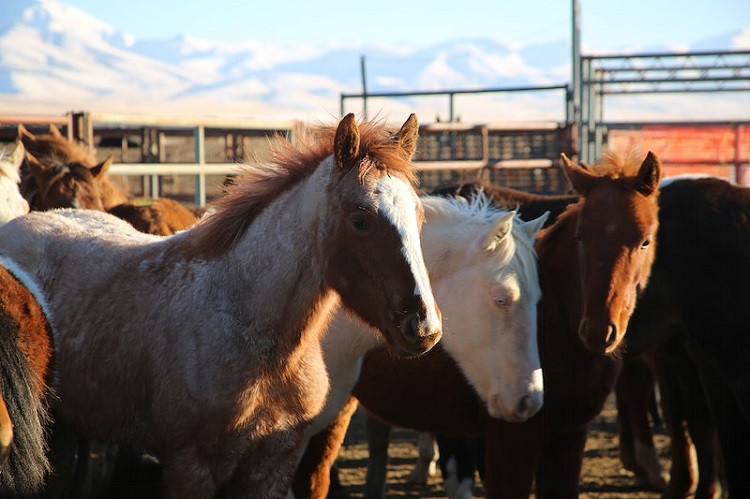
Some horse owners mistakenly believe there is no difference between humane euthanasia and horse slaughter. Those in favor of seeing horses as food-producing animals may try to convince you that the horse doesn’t feel anything and that death is instantaneous.
The reality is that the horse is often conscious while they bleed out and when skinned and processed.
Is Horse Slaughter Illegal?
Horse slaughter isn’t illegal in the U.S.; however, the federal government has passed several bills to protect horses from inhumane treatment. By law, slaughter plants are subject to USDA inspection.
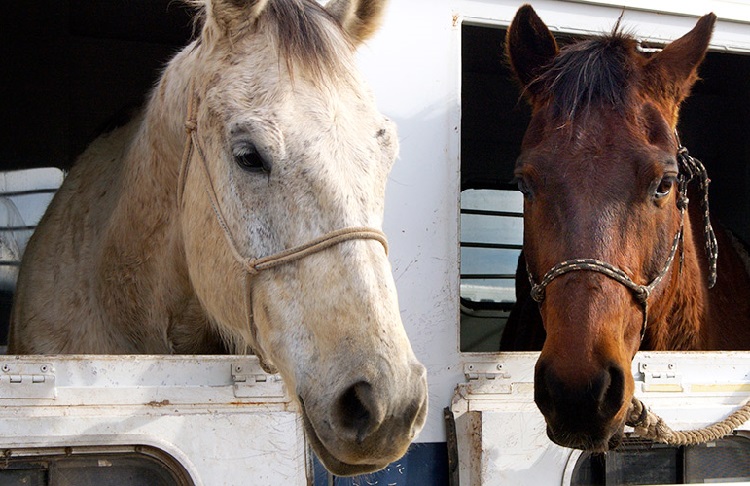
With changes to federal funding, inspectors no longer had the budget to inspect processing plants for suitability to slaughter horses. The result was that horses couldn’t be slaughtered until the plants were inspected—so no horses could legally be slaughtered in the U.S.
The Safeguard American Food Exports or SAFE Act was passed to prevent the export of horses for slaughter to foreign horse slaughter facilities. And while this Bill severely hampered the slaughter pipeline, many horses are still shipped abroad without the correct papers to foreign markets in Europe and the East.
While horse slaughter isn’t technically illegal in the U.S., it’s currently impossible for horse slaughter plants to operate in the U.S. since these don’t meet the federal legislation for the safe and humane slaughter of horses for human consumption.
Yet, according to the American Veterinary Medical Association, tens of thousands of horses are exported to other slaughter facilities abroad.
Equine rescue facilities support the Save America’s Forgotten Equines Act. Equine welfare requires vigilance as many foreign investors try to buy their way into the U.S. to set up slaughter facilities as slaughtered horses are cheaper to transport than live horses.
Transport of Horses for Slaughter
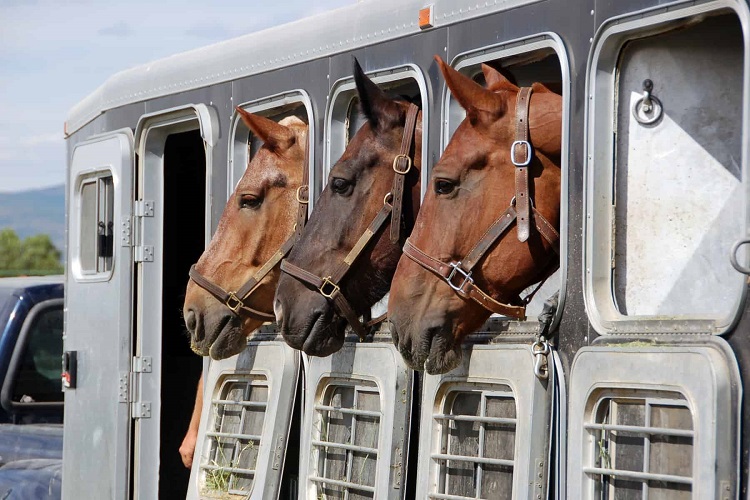
Horse neglect has been held up as one of the pro-slaughter reasons, but the reality is that there is more horse neglect by kill buyers who ship tens of thousands of horses to facilities across the world for slaughter abroad.
In the U.S., the 28-hour law requires all animals being transported for slaughter to be given five consecutive hours of rest when the journey takes more than 28 hours. During this time, the animals need to receive food, water, and shelter.
With wild horses often being shipped illegally and with no consideration of the 28-hour act, there is great concern over the equine welfare of these animals.
Typically, a horse isn’t shipped on a neat horse float to the nearest “humane” slaughterhouse. Instead, horses are shipped in crowded trucks, loaded with rough handling, suffer repeated blows, and are kicked and bitten by other scared equines.
Long-distance transport often takes much more than 28 hours, yet there is no rest, food, or water for these horses as it requires more money to offload them for five hours.
While there are checkpoints to try and catch such long-distance transport trucks, especially when crossing to Mexico, these livestock trucks are often in possession of forged papers.
Horse Slaughter in the United States
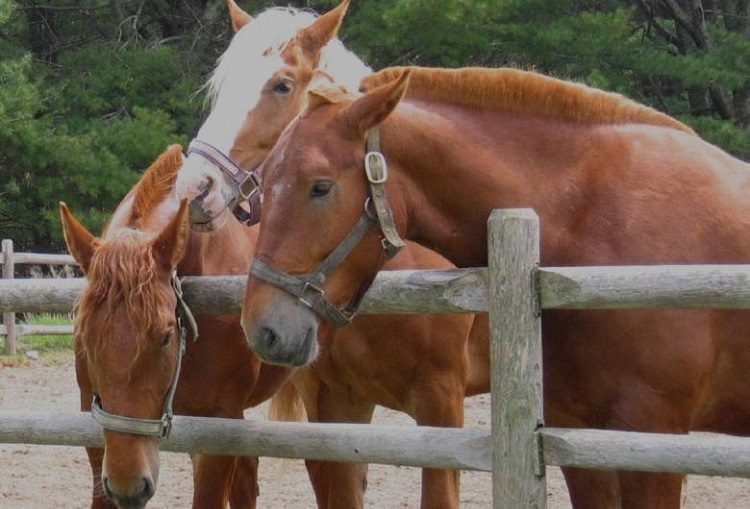
Prior to 2007, when the last horse slaughterhouses were closed, the U.S. sent thousands of horses to slaughter abroad, yet more than 80% of Americans are against horse slaughter.
Fewer horses are being sent to slaughter across U.S. borders. Figures have decreased from 166,000 in 2012 to around 23,000 in 2021. Yet I believe more needs to be done to prevent this abusive industry from starting again. It’s time to end horse slaughter for real!
Slaughter is not the only option for unwanted horses, as 92.3% of horses slaughtered are not in a terminal condition. These horses could be rehomed by horse rescue groups.
Horse Slaughter Abroad
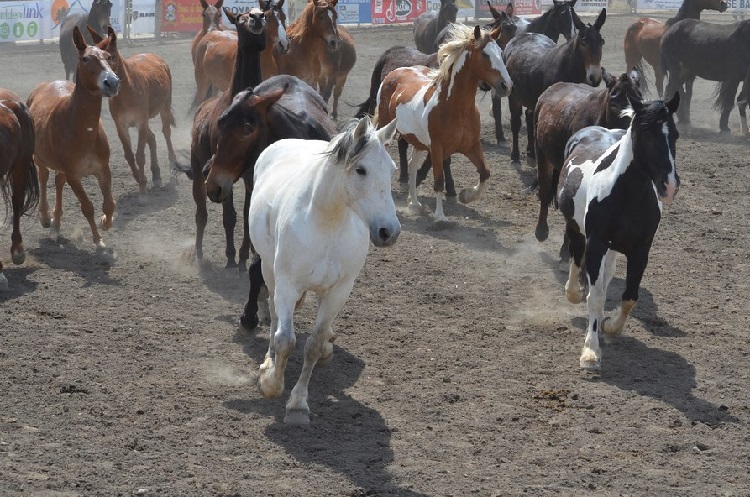
Sadly, horse slaughter is almost standard practice abroad. In countries like Ireland, Belgium, France, and Japan, horses are slaughtered daily for human consumption.
In fact, it’s considered a delicacy to eat horse steaks, with many horse rights activists protesting the wholesale export of horses to these countries where horse slaughter is standard practice.
I have seen horrific photos of plane loads full of draft horses being transported to foreign destinations for slaughter.
The American people have lobbied to ban horse slaughter, and stop horse exports to prevent foreign countries from slaughtering horses as the welfare of these horses can’t be guaranteed.
Impacts on the Equine Community
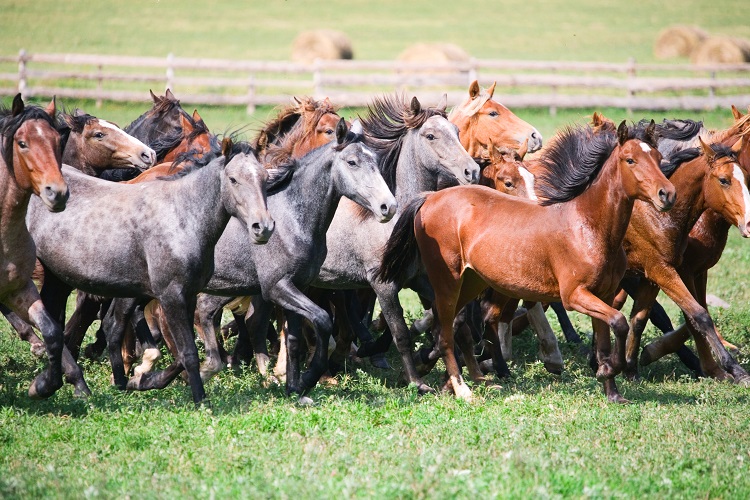
One of the motivating reasons those in favor of horse slaughter have upheld to justify the slaughter of wild and domestic horses in the U.S. is that horse slaughter provides a way to curb the abusive treatment of unwanted horses.
Supposedly, horse slaughter reduces the number of unwanted horses, and without this method to manage the number of horses, the horse population in the U.S. would soar. However, the opposite has happened.
Since the implementation of the ban on horse slaughter in the U.S., numbers of domestic horses have remained constant, and no more horses are reported as abused than before. In fact, horse breeding has decreased, indicating that people were actually breeding horses for slaughter.
One significant positive that has emerged is that the number of horse theft has decreased, according to the California Livestock Association.
Does Horse Slaughter Have a Negative Financial Impact on American Taxpayers?
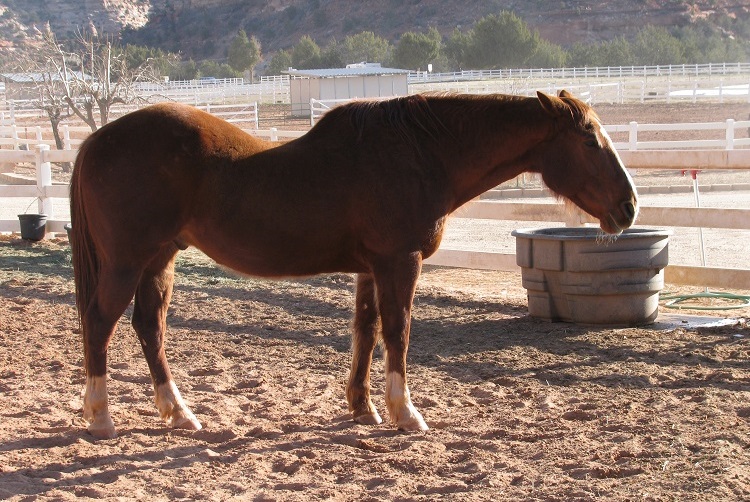
Taxpayer dollars are saved each fiscal year as there is no need to clean up and manage a horse slaughter plant where unsanitary practices required regular inspections.
With the abolition of horse slaughter plants, money has been funneled back to the beef industry, creating more jobs and better economic stability in the agriculture sector. When horses aren’t being slaughtered, the American meat industry makes money and creates jobs related to ethical meat processing.
Is It Possible To Conduct Commercial Horse Slaughter in a Humane Manner?
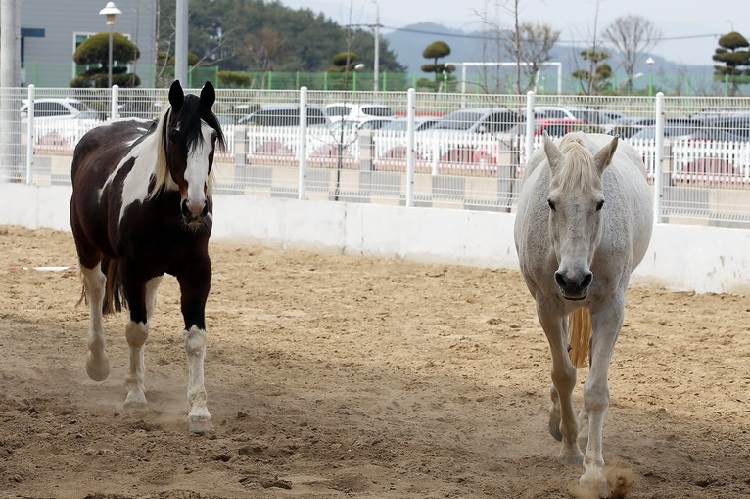
Experts at the Humane Society have stated that it’s not possible to ensure humane conditions for horse slaughter.
With a horse’s increased fight-or-flight responses, accurately stunning and exsanguinating a horse is not guaranteed via bolt gun, and even death by gunshot isn’t 100% foolproof. Many horses remain conscious while being dismembered.
What has been recorded at commercial horse slaughter facilities before their closure in 2007 is the debilitating injuries suffered during the kill process, as well as the inhumane treatment horses receive during long-distance transport to these facilities.
Many horses were severely and grotesquely injured while being transported long distances on cattle trucks to cattle slaughter plants.
The only humane euthanasia method available to horse owners is the use of veterinarians’ services for chemical euthanasia, which is fast, accurate, and performed by trained professionals. However, chemical euthanasia is costly, and it renders the meat toxic for animal and human consumption.
Can the Federal Government Ensure the Safety of Horsemeat?
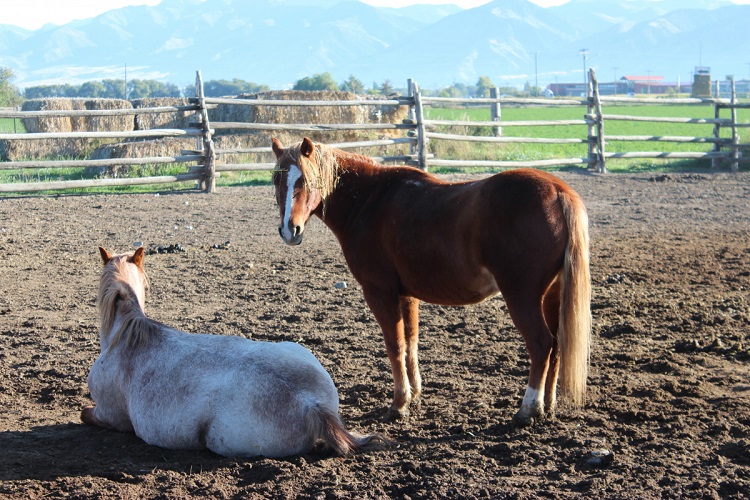
Animals in the commercial meat industry’s slaughter pipeline are carefully raised for slaughter. Each animal is given a number at birth, then tracked up to slaughter to record their medical histories so there can be clarity as to what medications the animal received in its life.
Horses are not raised the same. It’s not possible to accurately track a horse’s medical history, what diseases it has had, and what medications it has received. These all contribute to a massive question mark on the safety of horsemeat for human consumption.
Even conducting spot inspections of random samples from slaughtered horses can’t predict the unregulated administration of various medications, making horsemeat unsafe for humans to consume and threatening the food safety of other meat produced in the meat industry.
Has the Abolition of Domestic Horse Slaughter Hurt the Horse Market in the United States and Resulted in Abuse and Abandonment?
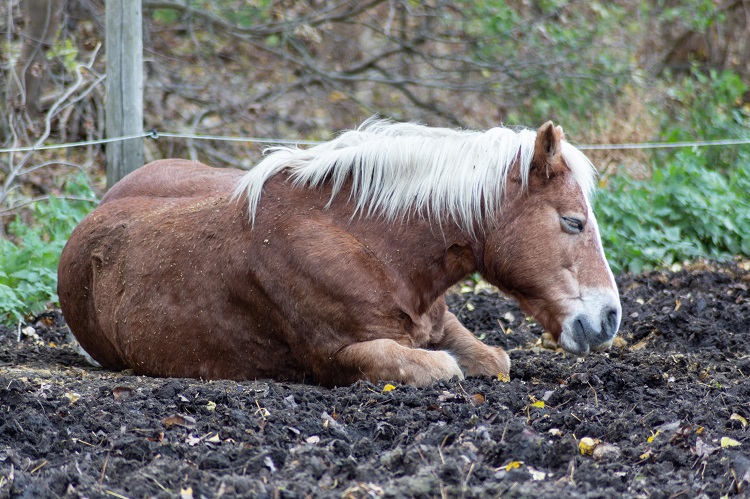
Having the option to sell horses for the meat trade in the U.S. actually led to more abuse and abandonment than what has been experienced since horse slaughter was banned in the U.S.
When horses aren’t seen as a source of income, people tend to see their horses as pets and companion animals. With that comes the responsibility to take better care of your horse.
Animal welfare agencies have found no increase in the abuse of horses, and not being able to sell horses for money has not caused more abuse or neglect of horses than when horses were sold for meat. Instead, an economic downturn has led to neglect and abandonment, but not abuse or cruelty.
The truth about the economic implications of banning horse slaughter in the U.S. is that fewer horses are being bred for slaughter and are used for leisure and as work partners for ranchers, which reduces the number of horses and also the overstocking of land with horses.
Fewer horses are being exported from the U.S. to Mexico and Canada for slaughter since the practice has become socially reprehensible. As a result, the overall welfare of horses has improved dramatically, and the agriculture sector has stabilized with a greater reliance on beef driving up prices.
Does the Local Economy Benefit From Horse Slaughterhouses?
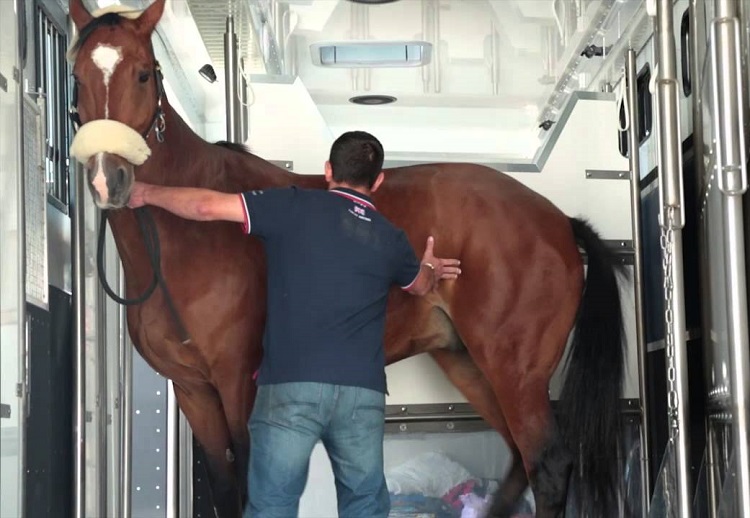
While it may seem like horses being sold for meat is a source of income that could boost the earnings of local people, the opposite is true. With horse slaughter comes the additional burden of cleaning up slaughtered plants and removing unusable equine carcasses.
Slaughtering horses at slaughterhouses that are used for the processing of beef also jeopardizes the safety of the beef industry due to communicable diseases being spread from carcass to carcass. When slaughterhouses close, it costs the local economy money.
What Should Be Done To Stop the Slaughter of Horses?
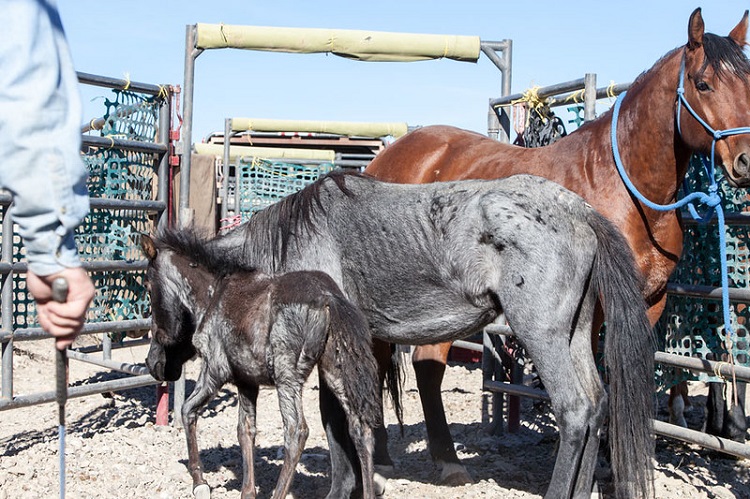
The battle to ensure that horse slaughter never again happens in the U.S. is still ongoing. While the slaughter of horses is prohibited by a few tenuous laws such as the SAFE Act and the 28-hour law, these are but a few obstacles in the path of those who profit from the terrifying end of our beloved equines.
More needs to be done to ensure that the wishes of the American people are respected by never again slaughtering horses for human consumption in the U.S. and never allowing horses to be shipped abroad for the same ghastly fate.
Lobby your local legislators to enforce and support the SAFE Act, oppose the inspection of meat plants that seek to slaughter horses, and create social media awareness of the dangers of eating horse meat.
Horse meat for human consumption is reckless since horses are often exposed to medications, dewormers, fly sprays, and more, which can contaminate horse meat.
Conclusion
If you feel like I do and want to forever stop the slaughter of horses for human consumption, lobby your US Department of Agriculture and federal legislators. Support animal cruelty activism groups to support the SAFE Act and ensure that horses don’t become animals raised for slaughter.
Groups like Save America’s Forgotten Equines need your support if they are to make real and lasting changes. Use your voice and write to the animal welfare institute and animal welfare council to stop the slaughter of tens of thousands of horses for human consumption.
Just because it happens across our borders in Canada and Mexico doesn’t mean it’s not your concern. American horses aren’t meant to feature on European plates or in Japanese bowls. Support local horse rescue efforts and ensure horses intended for work partners, sport, and pleasure are used as intended—not on the end of your fork.
Report animal abuse and become informed with the latest animal cruelty statistics.


